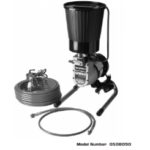Fungal nail infections can be a persistent and bothersome issue. While various treatments are available, making specific lifestyle adjustments can support management and help prevent recurrence. Understanding the factors that contribute to fungal nails is the first step in taking control of your foot health. By incorporating new habits into your daily routine, you can create an environment that is less conducive to fungus growth.
What Causes Fungal Nails?
Fungi are microorganisms that thrive in warm, damp environments. When these fungi overgrow, they can invade the nail bed, leading to fungal nails. Several factors increase the likelihood of developing this condition. The fungus often enters the skin through tiny cuts or a small separation between the nail and nail bed.
- Public Places: Walking barefoot in damp communal areas, such as swimming pools, locker rooms, and public showers, exposes your feet to fungi.
- Reduced Blood Flow: As people age, blood circulation to the feet may decrease, making it more difficult for the body’s immune system to detect and fight off infections.
- Heavy Perspiration: Feet that sweat heavily create a moist environment inside socks and shoes, which is an ideal breeding ground for fungi.
- Pre-existing Conditions: A history of athlete’s foot can increase your susceptibility to fungal nails, as the same type of fungus may spread to the toenails.
These common scenarios highlight how easily feet come into contact with the fungi responsible for nail infections. Awareness of these risk factors is a key part of prevention.
How Does Hygiene Affect Prevention?
Proper foot hygiene plays a significant part in preventing fungal nails. Keeping your feet clean and dry discourages fungal growth. Wash your feet daily with soap and water, and make sure to dry them thoroughly, especially between the toes, where moisture can get trapped.
Changing your socks regularly, especially after exercise or if your feet tend to sweat excessively, helps maintain a dry environment. Opt for socks made from moisture-wicking materials, such as wool or synthetic blends, which draw sweat away from the skin.
Proper nail care is another component of good hygiene. Trim your toenails straight across and keep them shorter than the end of your toe. This prevents debris from collecting under the nails and reduces the risk of injury. Sanitize your nail clippers and files before and after each use to prevent the spread of fungi.
How Do You Prevent Recurrence?
Once a fungal nail infection has been addressed, taking proactive steps helps prevent it from returning. Recurrence is common, so maintaining certain habits is a good long-term strategy. The goal is to limit your feet’s exposure to fungi and moisture consistently.
- Wear Appropriate Footwear: Select shoes made from breathable materials, such as leather or canvas. Avoid tight-fitting shoes that crowd your toes and trap moisture.
- Alternate Your Shoes: Give your shoes at least 24 hours to air out and dry completely between wearings. This prevents a consistently damp internal environment.
- Use Antifungal Products: Applying antifungal powders or sprays directly into your shoes can help eliminate any lingering fungi.
- Protect Your Feet in Public: Always wear sandals or shower shoes in locker rooms, public pools, and hotel bathrooms to avoid direct contact with contaminated surfaces.
By integrating these practices into your daily life, you significantly lower the chances of dealing with fungal nails again.
Consult a Podiatrist
Managing fungal nails effectively often requires professional guidance. If you notice changes in your nails or suspect an infection, a podiatrist can offer a proper diagnosis and discuss appropriate management options tailored to your situation. They can assess your specific condition and provide personalized recommendations for your foot health. A consultation can provide clarity and a structured plan for addressing fungal nails.











